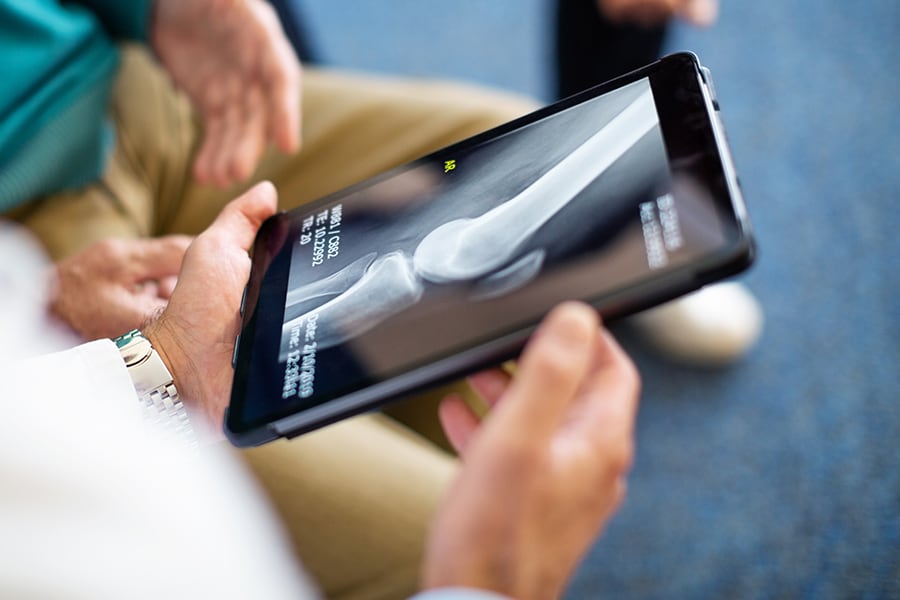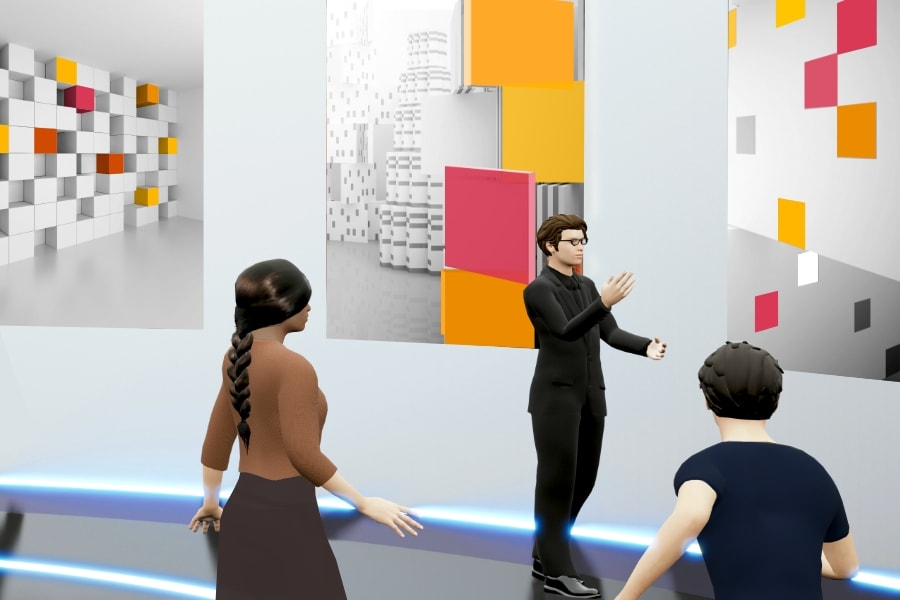Harnessing extended reality to improve healthcare delivery and health equity


Summary
- Access to care and trust in the healthcare system are equity issues that the metaverse can help solve.
- Extended reality can enhance healthcare workforce training, preventive care, patient engagement.
- Emerging technologies offer new possibilities in understanding, analyzing and applying data to identify and target gaps in patient care.
“The metaverse” and “health equity” aren’t typically mentioned in the same sentence, but they’re not as different as you may think. Both are large, complex and multifaceted concepts, often misunderstood, with powerful implications that span beyond the confines of a particular industry, location or population. Both were amplified by the COVID-19 pandemic: the metaverse demonstrated its ability to connect, integrate and transform, while the healthcare system suffered worsening struggles with access to and affordability of care.
Today’s technological climate and the potential capability to extend the physical world with emerging technologies present an opportunity for healthcare organizations to creatively reimagine health equity solutions. And they can simultaneously address other healthcare growth goals, ranging from clinical workforce shortages to healthcare digitization, to patient engagement and retention. Health equity and broader healthcare challenges are neither mutually exclusive, nor limited to healthcare itself. A significant portion of a person’s health is determined by the social determinants of health (SDOH) — factors like access to quality education, nutritious food and reliable public transportation. Metaverse technologies may be a key to effectively considering many of health equity’s features in typical healthcare solutions.
The metaverse represents a group of rapidly growing and evolving emerging technologies, a major proponent being extended reality (XR). XR encompasses a breadth of digitally enhanced immersive experiences, accessed through:
- Virtual reality (VR) a headset-based fully immersive environment that enables multi-user remote collaboration and can offer rich situational/technical training
- Augmented reality (AR) engaging digital content overlayed on top of the real world, accessed via headset, glasses or a mobile device, that offers the ability to guide, train, build and connect individually or with others;
- Mixed reality (MR) a heightened immersive experience that leverages the convergence of physical and digital experience.
The future of XR in healthcare
XR technology has been leveraged by some healthcare organizations for the past few years and has been largely focused on complex clinical training like simulated surgical procedures. Today’s rapidly evolving technological landscape yields new and updated technologies that can bring new opportunities for healthcare players. Improving access to quality care, creating more meaningful and engaging interactions with patients, and global clinical consultations and collaboration are a few of many possibilities. We are only beginning to realize the potential of XR healthcare applications.
XR healthcare applications have many implications for health equity as well. These include (but are not limited to):
- Enhancing educational programs to effectively digitally upskill users and catalyze health literacy improvements
- Rebuilding trust in the healthcare system, particularly among underserved populations who may lack confidence in the healthcare system
- Increasing availability and accessibility of care and resources for underserved communities
It is important to note that while health equity solutions may not explicitly appear to pinpoint health equity, their design, deployment, and maintenance intentionally consider holistic health factors — inclusive of SDOH — to help bolster a given solution with an equity-first foundational strategy. Below are a few real-world examples of how health organizations can leverage XR to address industry challenges with health equity implications.
VR and the nursing shortage
Leveraging VR to expedite and augment nursing orientation can creatively address nursing shortages and their health equity impacts, including limited access to and increased cost of care, while simultaneously enhancing training effectiveness and enterprise connectivity.
- VR training is reported to be four times more effective than in-person training and trainees are reported to have an increased confidence rate of 275%; about one-third of employers (34%) who have used VR training say it is more effective in developing and training their workforce.
- VR enables health organizations to use resources beyond the geographic bounds of a given campus and encourage enterprise-wide collaboration.
- VR solutions can exist across a spectrum of hybrid to immersive orientation modalities and are customizable to accommodate a given health organization’s physical, technological, geographic and health preferences.
- VR’s ability to train nurses on a range of cultural care scenarios better equips them to be aware of possible cultural biases, sensitized to cultural concerns and capable of becoming more culturally competent in working with a diverse range of patients.
XR and behavioral health care
Employing XR technologies can enhance emergency medical professionals’ and nurses’ abilities to effectively assess and triage behavioral health patients. This may reduce preventable emergency department visits and address social determinants of health as well as access to quality care.
- AR technology can streamline and expedite the sharing of critical health information at first point of contact.
- VR technology can improve EMS and nurse training by immersing trainees in realistic behavioral health simulations.
- AR technology can improve quality of care by assessing the more effective course of action in the field with remote assistance of the leading specialist anywhere.
- Providing care with a VR assistant who speaks the patient’s language and looks like the patient can help engender trust and understanding.
XR and preventive care
Having patients explore the health environment before receiving care would be a big step forward in preventive care and in facilitating preparation to medical procedures. Many Black Americans have a distrust of the healthcare system based on medical mistreatment in the past, and Black Americans report that they are consistently undertreated for pain relative to white patients. This distrust, often combined with limited access to healthcare, has led to less engagement in healthcare and poorer health outcomes. XR can help build trust and offer easier access to care:
- Before undergoing a procedure, patients could explore the facility with a virtual reality setup by their health insurer. The virtual tour guide can look like the patient and speaks without jargon.
- Patients can have a better understanding of what to expect, and the virtual tour guide has also handled all the paperwork, so when patients arrive for an appointment, there is no waiting.
- Patients can feel informed, empowered and more in control of their health.
XR’s potential to improve health organizations’ health equity approaches is as expansive as the metaverse itself. Additional XR applications may include:
- Enhanced clinical trials
- Innovative health literacy initiatives
- Immersive cultural competency training for clinicians
- Remotely assisted self-administered medication guidance
- Dual AR-RPM (remote patient monitoring) device support
- Remote and enhanced clinical collaboration
Intentional collaborative relationships are key
XR technology requires end-to-end technological support, just as with any typical software implementation. Given the range and uniqueness of XR, collaboration among health and tech players to pool knowledge and capabilities can both reduce required talent and financial resource investments as well as apply a health equity lens to hardware and software decisions so they are technologically strong while catering to the target demographic’s needs. Additionally, regulatory concerns (e.g., required FDA authorizations) and embedded security and privacy features are critical. Such intentional collaborations can benefit from leveraging an agile approach (such as PwC’s Metaverse Discovery Workshops) when curating and deploying XR solutions.
Equity-centric software development should be at the forefront
A successful XR solution should either initially incorporate or include a foundation to enable the future integration of additional metaverse technologies. XR and AI are symbiotic transformative enablers that, when combined, can produce powerful results. However, it is critical to apply a pervasive health equity approach when AI is involved to confirm that software development practices (especially those leveraging machine learning) incorporate diverse data sets and are routinely assessed for potential bias. Just as in our lived ecosystems, we should be conscious of possible bias in the metaverse. With continual prioritization of health equity as a central design principle, thoughtful programming, and regular quality control, such potential challenges can be mitigated to protect the integrity of health equity metaverse solutions.
Defining an XR-health equity strategy
XR has the potential to revolutionize how we address health equity. It can offer a range of new possibilities in understanding, analyzing and manipulating and applying data in multiple dimensions to identify and target care gaps.
However, it’s important to consider the potential challenges and inequities that XR technologies may trigger. Similar to the adoption of digital health solutions, healthcare organizations should consider how XR solutions may exacerbate current disparities or create new ones. The COVID-19 pandemic is a prime example: While the healthcare industry was quick to digitally transform to keep up with demand — by offering telehealth, for example — many of these digital offerings and initiatives did not take into account the US’s poor broadband infrastructure and lower digital literacy rates of certain populations, resulting in a digital divide and disparities in access, use and quality. Unfortunately, there are countless other examples in the history of US health programs yielding poor outcomes due in part to a lack of diversity, inclusion, cultural competence and equity-focused practices.
To achieve health equity goals, it is critical for health organizations to invest in or work with businesses using an equity-first framework and prioritizing inclusive design in developing and deploying XR solutions.
Getting started
A metaverse strategy is essentially a channel strategy, much like telehealth. Companies should think holistically across all channels (telehealth, virtual, inpatient, ambulatory, etc.) to determine where the metaverse can play a role and help improve access.
Similar to other emerging technologies, we suggest:
- Starting by assembling the right experience internally and establishing intentional collaborations
- Assuming an agile approach and leading with inclusive design
- Launching on a small scale
- Quickly prioritizing a use case to focus on and monitoring performance against it
- Using lessons learned to fuel future development and scaling
To hear a discussion on this topic, listen to our Next in Health podcast on immersive technology.


With you in the metaverse
Building trust and delivering value in the next digital world with PwC’s metaverse services
Let’s plan your next move
The metaverse is here, and so are tested strategies to navigate it. Wherever you are on your metaverse journey, PwC’s global community of solvers can help you find success in this next evolution of our shared digital reality.








